Next up: fiberglass on the bottom, and I’ll show the spray rails, what I made them of and what they look like on the side panels. After that, it’s all about painting — lots of it!!
Here’s the bare hull ready for epoxy and fiberglass. On the right you can see the holes made by the screws used to hold down the plywood when it had been bent into place. After some masking tape was applied underneath, I put some unthickened epoxy into the holes.
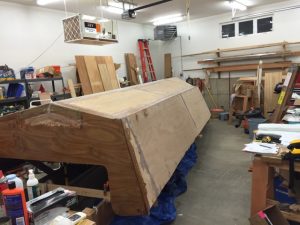

I’ll roll out a single length of fiberglass, 50 inches wide, the whole length of the hull on each side. To get the right length, I rolled it out from a large roll of glass and cut off the amount needed. By the way, this is 10 oz cloth.

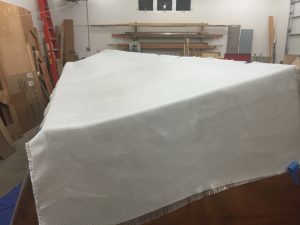
Rolling out the cloth on the hull is a challenge as the weave is loose so the cloth shifts out of square as well as snagging on anything. In my case, I had to have a second set of hands to keep from going crazy. Once it was positioned and smoothed out, I let it set overnight so it would better maintain its position as I spread the epoxy on it.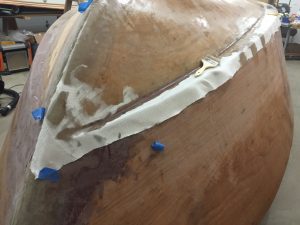
Notice that I used masking tape to help hold it in place while I rolled, squeegeed, and brushed the epoxy on.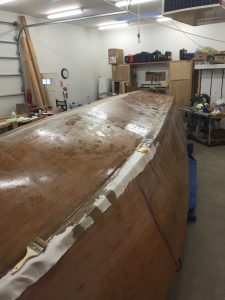
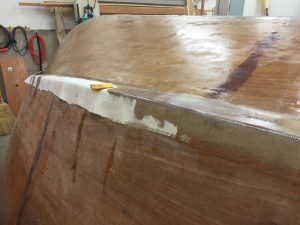
 The result of several hours of work. Not great, but entirely satisfactory.
The result of several hours of work. Not great, but entirely satisfactory.